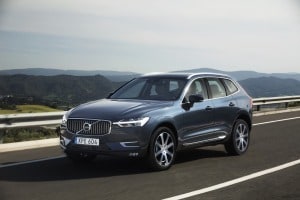What Can We Infer From October Sales?

From a forecasting perspective, October is unusual in that the estimates seem to be in tight agreement. They range from a Seasonally Adjust Annual Rate (SAAR) of sales from 13.2 million to 13.4 million vehicles. Where I would have to differ from the other forecasters is in interpreting what the sales results mean.
Someone with a narrow look at the market would consider the past few months, or compare sales with October 2010. From these perspectives, sales look up nicely. Remarkably so, when considering the bouncing around we have seen in the financial markets.
With sales increasing now for several months in a row, it would be understandable if we concluded that the recovery in vehicle sales was well underway.
Economists (and others) pay close attention to vehicles sales because recent history shows they lead the economy out of recession. So if vehicle sales are picking up, an economic rebound can’t be far behind.
Is that what we can infer from October sales?

Instead of looking at just the past few months, we should really go all the way back to the beginning of the year. January and February results were good news, with sales jumping ahead of December 2010’s pace. Much of this can be ascribed to General Motors surprising the market with unusually aggressive incentives. These stole some sales from competitors, but also served to bring consumers into the market a month or two early, which was especially true with GM’s early lease termination offers. So I expected a sales pull back in March and April.
But then the disasters in Japan hit. Initial news reports suggested that the impact would be severe -- and every car company would feel the effects. It didn’t take consumers long to figure out that if their near-term plans included a vehicle purchase, they’d better act quickly before prices shot up and selection suffered.
This triggered a mini sales boom during the last couple weeks in March and into early April. These effects are partially obscured by the full month numbers.
By the end of April, sales were slowing sharply. This trend continued deep into what would have normally been the annual model-year change sales period. Importantly, a spike in fuel prices exacerbated the effect of shortages in the small and compact segments. By August, inventories were recovering and prices declining. September saw the year-end sales messages finally ramping up. Declines in fuel prices helped normalize demand patterns. These trends continued into October.
So what does all this mean? Events through mid-April served to pull ahead some sales that would have occurred through the summer. High prices and shortages in late April through August kept some consumers from the market. Netting it out, there were easily 200,000 sales that would have occurred this year that were deferred. These consumers started returning in September and have fueled a sales rebound. Depending on pricing and availability through December, most of this should play itself out by year-end.
This suggests we should view sales in October with a degree of caution. The performance over the past few months is not the start of a trend. It is more of a mini-bubble.
I do expect that the level of demand for vehicles will continue to rise until next year. There are a growing number of consumers for whom a new vehicle is becoming a necessity. That should create some tenacity to the sales increase. But I expect the slope of this underlying trend to remain modest.
Of course, this is all before we have considered the impact of flooding in Thailand that already is hurting Honda production.
Jeremy Anwyl: Vice Chairman of Edmunds.com. Follow @JeremyAnwyl on Twitter.





